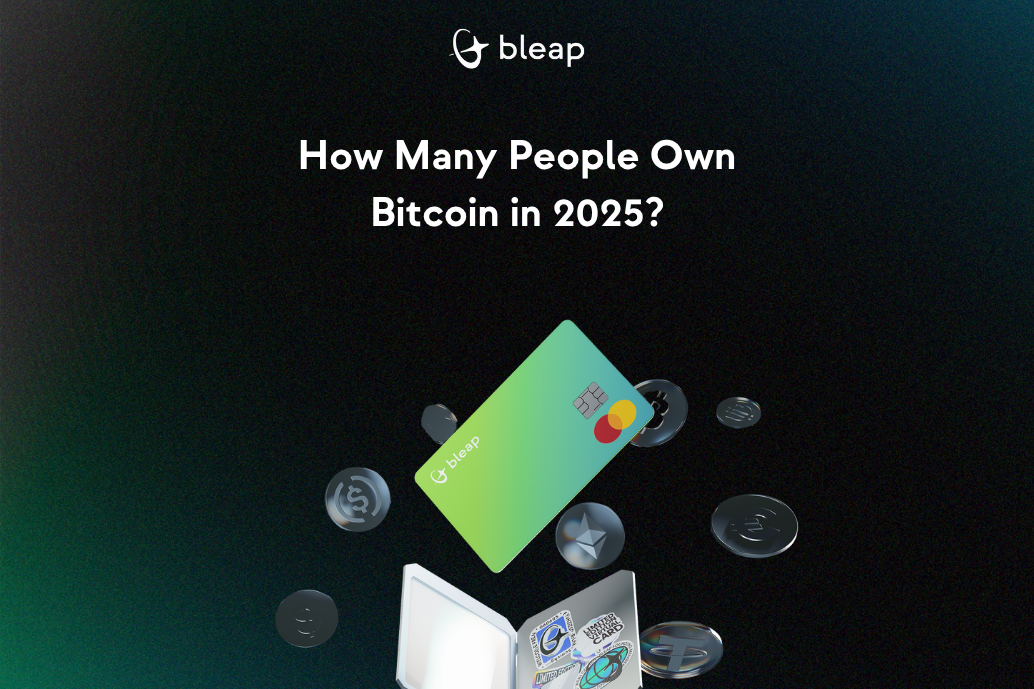
Stablecoins and DeFi investments carry risks, including volatility, smart contract bugs, and regulatory uncertainty. This content is for educational purposes only and does not constitute financial advice. Always research before using decentralized protocols.
As of 2025, an estimated 480 to 500 million people worldwide own Bitcoin in some form. However, less than 1 million wallets hold at least 1 full BTC, showing how scarce it has become to own one whole Bitcoin.
According to reports from Glassnode, Chainalysis, and Crypto.com’s 2025 Market Report, nearly half a billion people now hold some amount of Bitcoin.
This growth is driven by:
However, blockchain data can’t perfectly reflect the number of people.
A single individual might control several wallets, and many wallets belong to exchanges holding Bitcoin for millions of users.
Bitcoin ownership has multiplied every few years as accessibility improves.
Owning one full Bitcoin has become an exceptional milestone.
In 2025, approximately 950,000 wallet addresses hold 1 BTC or more, less than 0.2% of all Bitcoin addresses.
Since many belong to custodians and institutions, the number of individuals who actually own 1 BTC is probably well under one million.
Owning a single Bitcoin places you among the top 0.1% of all Bitcoin holders, as rare as owning a high-end property in the digital economy.
The scarcity of full Bitcoin ownership is the result of several converging factors:
In short, supply is fixed while global demand keeps rising, making each fraction of a Bitcoin more valuable over time.
Very few users hold large Bitcoin balances:
Most of these addresses represent institutional holdings or custodial wallets managing funds for thousands of users.
Even small Bitcoin holders represent a growing global movement toward decentralization.
Owning 0.1 BTC (roughly $6,000 in 2025) already places you ahead of 90% of all Bitcoin users.
With Bitcoin’s capped supply, even small ownership is statistically significant for future scarcity.
Bitcoin ownership remains heavily concentrated:
In total, over 60% of all Bitcoin supply is controlled by long-term investors, institutions, or custodial platforms.
Regional data shows ownership expanding most rapidly in:
These regions use Bitcoin for remittances, savings, and inflation protection.
Meanwhile, Europe and North America remain leaders in institutional and ETF adoption.
It’s important to distinguish between Bitcoin holders and active adopters.
Blockchain data counts wallet addresses, not people. Many users store Bitcoin on custodial exchanges, meaning the number of real holders is likely higher than blockchain analytics suggest.
Still, the growth trend is undeniable: Bitcoin continues to spread across demographics, economies, and geographies.
The next phase of Bitcoin adoption is about true ownership, not speculation.
Users are moving away from centralized exchanges toward self-custody wallets.
Modern solutions such as MPC wallets and non-custodial apps make Bitcoin safer and easier to manage.
These tools remove seed phrases, reduce single points of failure, and keep control in your hands, aligning with the Bitcoin ethos:
“Not your keys, not your coins.”
If you want a simple, non-custodial experience, Bleap combines an on-chain account with a free Mastercard and MPC wallet security.
Between 480 and 500 million worldwide.
Around 950,000 wallets, but fewer than 1 million real individuals.
Roughly 150,000 wallets.
Over 30 million wallets, placing them in the top 10% of holders.
About 6% of the global population.
Use a non-custodial or MPC wallet like Bleap, where you control your keys and security.
Bitcoin ownership keeps rising, but real scarcity remains.
With less than 1 million people holding a full BTC, owning even a fraction positions you early in the world’s most limited digital asset.
For safe, transparent Bitcoin ownership, choose a non-custodial solution that gives you control, security, and utility.
Start your Bitcoin journey safely with Bleap, your on-chain account with full control
Features
Improvements
Bug fixes